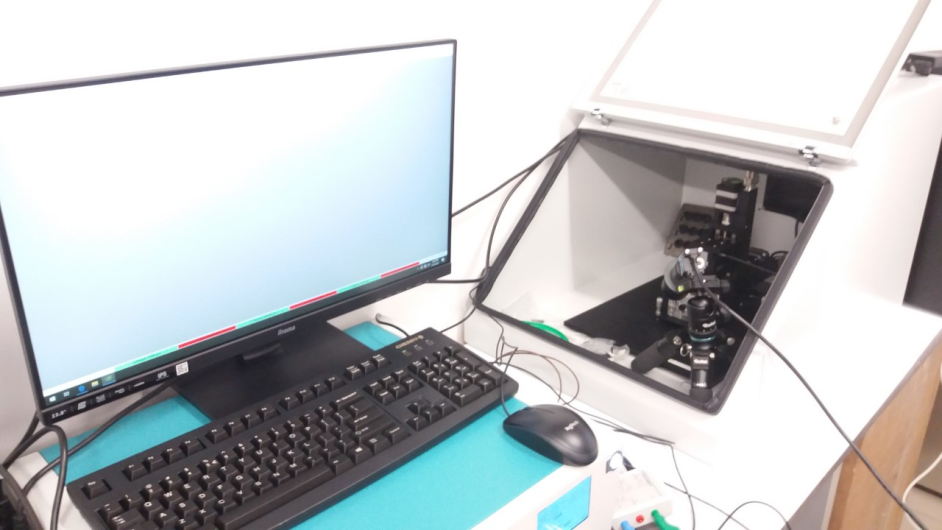Metrohm-Autolab potentiostat/galvanostat PGSTAT302N
The Autolab/PGSTAT302N is a top-of-the-range modular potentiostat/galvanostat for high currents (2 A limit, or 20 A with the BSTR20A amplifier) and WE-CE voltages up to 30 V. It is equipped with both analogue and digital (DIO) inputs/outputs to allow control of external devices and accessories.
A frequency response of over 1 MHz and the ability to expand with any of the available modules make this instrument not only the fastest, but also the most versatile instrument in the Autolab family. For cyclic voltammetry, the maximum sweep rate is 250,000 V/s for instruments equipped with a combination of SCAN250 and ADC10M modules. For ‘chrono’ methods, the interval between measuring points can reach 100 ns, using the ADC10M module and NOVA software.
There are two basic ranges of AUTOLAB models. The N series are top of the range instruments, with the best performance and a modular design that allows the measurement capabilities to be extended in the future by installing specialised modules.


The range of tests performed includes:
- electrochemical impedance spectroscopy tests
- corrosion resistance testing.
Application areas:
- Batteries, fuel cells, supercapacitors
- Coatings and corrosion studies
- Conductive polymers and membranes
- Dielectrics
- Electrocatalysis
- Electrodeposition
- Semiconductors
NOVA software
The latest NOVA software package gives you access to the internal functions of the potentiostat, allowing you to create your own measurement techniques, modify existing experimental procedures almost without limits, and integrate with other instruments and measurement systems, even for combined measurements (e.g. spectroelectrochemical). A particularly useful feature is the ability to combine several AUTOLAB instruments (even of different types!) into a virtual multi-channel potentiostat and perform synchronised measurements simultaneously.

Scanning electrochemical microscopy test station

Scanning electrochemical microscopy visualises the local electrochemical activity of the sample surface. This is done by moving the microelectrode a short distance above the sample surface (the area of interest is between 3 and 5 microelectrode diameters).
In the examined area, the microelectrode interacts with the surface in a way that depends on the surface properties. Microelectrodes with a radius of less than 100 µm are particularly useful, due to the semispherical nature of the diffusion and the rapid attainment of a stationary state. The current flowing through the microelectrode during surface scanning is modulated by the changing electrochemical properties of the sample surface.
Improvement of the imaging quality of the Sensolytics Base SECM, by the introduction of a piezoelectric positioning system.
- Nominal resolution of 1 nm
- with a repeatability of 10 nm
- for an area of 100x100x100 μm.
The precise separation of topographic and electrochemical information, allows the distance between the scanning tip and the sample to be controlled.
It is possible to maintain a constant distance of 50 – 300 nm above the sample surface through a feedback mechanism.
Suitable for structures < 1 µm, depending on High-Res option
Option: Shear Force

Workstations for automated, real-time surface plasmon resonance measurements
The Surface Plasmon Resonance (SPR) technique allows the study of phenomena occurring at the surface of a gold layer sputtered onto a glass disc and in an adjacent solution layer of approximately 400 nm thickness.
Our SPR is equipped with an electrochemical cuvette which, in addition to simple SPR, allows tests in which the gold layer is the working electrode (electrochemical SPR – ESPR).
Main areas of application of the SPR technique:
- antigen-antibody interactions
- surface modification, including molecular (mono) layers
- polymerisation and electropolymerisation
- biosensors and DNA/RNA chips
- biocompatibility of coatings and surface layers
- kinetics of bio-molecule interactions
SPR measurements can be combined with various electrochemical techniques, such as cyclic voltammetry, chronoamperometry or impedance spectroscopy.

